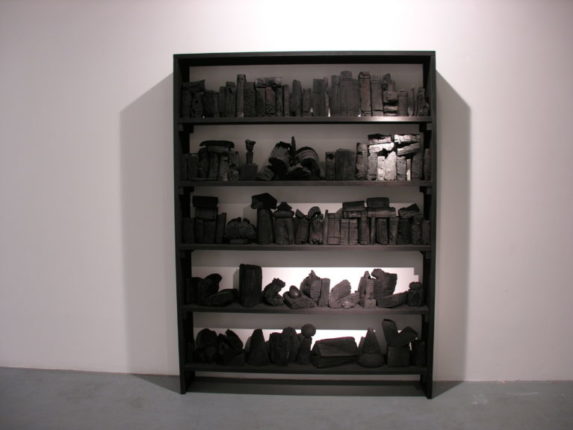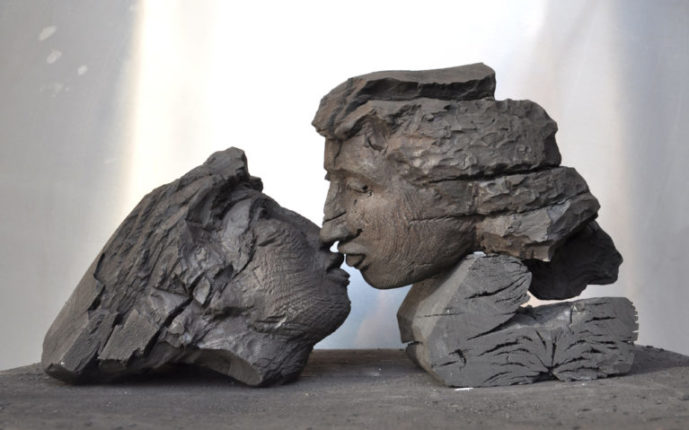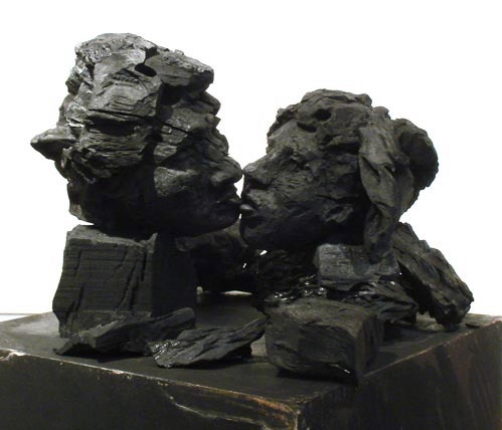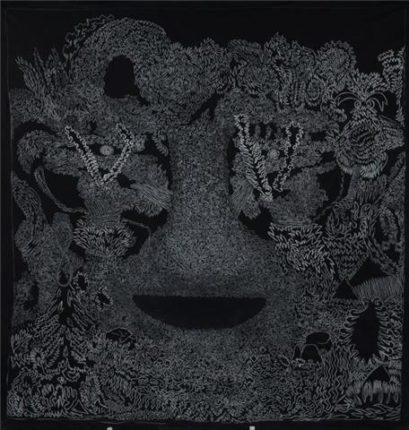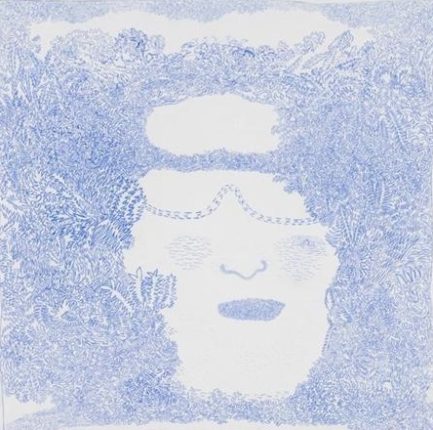Exhibition: 12th March to 8th May 2010
Maddox Arts gallery is pleased to announce Vicente Grondona’s first UK solo show. For this special occasion Vicente has created a series of drawings and different charcoal sculptures including his renowned Human Library, previously exhibited in Paris and Argentina. The artistic production of Grondona has always being strongly influenced by nature. His show, Vegetable Man, presents a series of silk drawings where the fragile and unstable quality of charcoal materialises a dialogue of uncertainty between magical characters taken from an unknown civilisation. The intricate, yet powerful design that gives life to these mythical figures allows us to access a world injected with fantasy where obscure secrets remain untold and mystery contributes to unfold complex ideas about contemporary culture.
These philosophies can be perceived on the geometric objects carefully arranged on his charcoal bookshelf where post-colonial ideologies are discretely disclosed to the viewer. One could argue the way in which Vicente’s bookshelf stands as a synonym for colonisation establishing an awkward relation between binary oppositions. The coloniser, represented by books on English literature such as Mary Shelley’s gothic novel, Frankenstein, become a display of humanist knowledge where ideas of romance, nature and horror are contrasted to the portrait of the noble savage. As the viewer gets closer to this collection of memories and experiences he/she soon realises how the acquisition and accumulation of knowledge and goods depended directly on the exploitation of the primitive. The colonised is symbolically represented by charcoal, highlighting the vulnerability of non-western countries including the material constraints experienced by contemporary artists in Latin American cities like Buenos Aires. By contrast, Vicente’s drawings depict the sophistication and elegance of Fragonard’s dense ornamentation.
Vampire, part of his ‘People Dragged by Nature’ series portrays the refinement associated with eighteenth century French culture and this is reflected by the figure’s tall, ribboned hairstyles. This can be contrasted, at the same time, by the overall primitive style of his drawings where a hint of Incan sensibility is perceived as illustrated by Marfil. Once again the Argentinean artist plays with binary oppositions creating a balance between primitive civilisations and surrealism, psychedelia and the naiveness that so well characterises his work.
A Brancusian legacy is also found on Grondona’s bookshelf. Some of its geometric figures resemble the Romanian sculptor’s modernist style. Vicente’s Kiss alludes to Brancusi’s embracing limestone couple, The Kiss; repeatedly carved during the early twentieth century. Both sculptures are a sign of ideal union where natural forms are reduced to a single mineral block of figurative simplicity. Vicente’s charcoal sculptures evoke tension and rest, volubility and heaviness, light and darkness, a language of antonyms, which are also the essence of his drawings where the figurative and the abstract are brought together to present unresolved tensions. In his drawings Vicente attains a unique space of silence creating a feeling of isolation between his magical figures, which are all rendered with a sense of naiveness. These gigantic visages composed of ambiguous tribal and European ornaments confront the viewer’s imagination inviting him/her to be part of Grondona’s bestiary; a contemporary collection of mythical tales that far from amusing the spectator’s eyes intends to uncover cultural issues that lie at the core of our current society.
